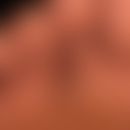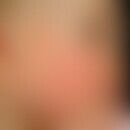Synonym(s)
HistoryThis section has been translated automatically.
DefinitionThis section has been translated automatically.
Spectrum of clinically different, inflammatory, mostly chronic and relapsing, less symptomatic, haemorrhagic-pigmentary diseases of the skin (no systemic involvement), which are characterized by petechiae in a fresh relapse phase and later by yellow-orange-brownish foci (so-called cayenne pepper-like).
Preferably the distal lower legs are affected, in very pronounced cases also the thighs, trunk and upper extremities.
You might also be interested in
EtiopathogenesisThis section has been translated automatically.
Pathogenesis is unclear. Allergic late type reactions (type IV reactions) caused by systemic or external drugs, by infections but also by food are discussed. In particular, the following triggers are mentioned:
- Drugs: statins (13%), beta blockers (10%), benzodiazepines (diazepam), meprobamate, diuretics (furosemide), isotretinoin and others.
- infections: respiratory infections
- food additives
- chronic venous insufficiency (CVI)
- house dust
- cryoglobulinemia type III
- Contact allergens (dyeing or bleaching agents in cotton textiles).
In larger studies (Kim et al. 2015), associated diseases were described as: hypertension (16%), diabetes mellitus (10%). To what extent these "concomitant diseases" are significant for the pathogenesis of the clinical picture remains open.
ManifestationThis section has been translated automatically.
Start is possible at any age. Particularly in younger and middle-aged adults; occasionally also in children < 10 years of age. Preferably occurring in the male sex.
LocalizationThis section has been translated automatically.
ClinicThis section has been translated automatically.
Schamberg's disease (about 60% of all cases of PPP) occurs as an intermittent, clinically variable clinical picture, the appearance of which depends on its acuteity and frequency of relapses. With high relapse activity, reddish-brownish, frayed patches reminiscent of terrazzo floors tend to appear. With prolonged persistence, an increasingly rich, inhomogeneously broken brown tone appears.
The patches are usually symmetrically distributed, varying in size (from 0.3 cm to 10-20 cm), usually blurred, sometimes very discrete, asymptomatic (itching is usually absent) yellow, yellow-brown or red-brown patches, which are usually more pronounced on the distal lower legs in relation to the proximal areas. Included in these areas are irregularly distributed and dense 0.1-0.2 cm large, light or brown-red, non-anaemic spot enhancements. The surface of the skin lesions is usually smooth, more rarely atrophic.
Fine lamellar scaling may occur; this can result in an eczematous picture(eczematid-like purpura, also known as "blue jeans dermatitis").
Lichenoid aspects may also result(Gougerot-Blum type; especially in older men), as well as apparently purely telangiectatic forms.
The extent to which the anular-teleangiectatic form described by Majocchi(purpura anularis teleangiectodes) requires a special status (especially in young women; spontaneous healing) remains open.
This statement also applies to the unilateral lichen aureus(occurring as a localized, sometimes also striate dermatosis).
HistologyThis section has been translated automatically.
Bulky, band-like, subepidermal, rarely perivascular (vessels are cuffed), accentuated, lymphohistiocytic infiltrate. In the "eczematid-like purpura" variant, there is minor acanthosis with discrete focal epidermotropy. Erythrocyte diapedesis especially in the stratum papillare and hemosiderin deposits in the dermis. In the lichenoid variant (Gougerot-Blum type), a lichenoid pattern with vacuolated degeneration of basal epithelial cells may also be histologically detectable.
Differential diagnosisThis section has been translated automatically.
Clinical Differential Diagnoses:
- Leukocytoclastic vasculitis: Usually acute; hardly any extensive discoloration of the skin; histology is diagnostic.
- Urticaria pigmentosa: Permanently present; no extensive discolorations; Darier's sign is positive; histology is diagnostic.
- Purpura jaune d'ocre: pigmentation due to congestion in chronic venous insufficiency or in simple (heat- or cardiac-related) congestive edema.
- Sarcoidosis of the skin: small nodular (plaque-like) disseminated form. Histology with evidence of sarcoid infiltrates is diagnostic.
Histologic differential diagnoses:
- Lichenoid or fixed drug reactions.
- pigmented-purpuric form of mycosis fungoides
- stasis dermatitis (simple, non-inflammatory erythrocyte extravasations)
General therapyThis section has been translated automatically.
Avoidance of the triggering factors.
Discontinue or convert triggering medications.
Chronic bacterial infections (focus search) are to be sanitized.
Positive effects of such therapy measures can only be expected after weeks or months .
External therapyThis section has been translated automatically.
Symptomatic therapy is in the foreground.
Itching or burning sensations are very rare. In these cases, therapy is attempted with cooling lotion alba or ethanolic zinc oxide shaking mixture R292, if necessary with the addition of 2-5% polidocanol as polidocanol cream 2-5% or polidocanol-zinc oxide shaking mixture 3- or 5%, or 1% menthol cream(menthol cream 1%).
Otherwise, intermittent use of glucocorticoid-containing externals, e.g. hydrocortisone creams (Hydrogalen, hydrocortisone cream 0.5-2.0%) or prednicarbate cream.
Internal therapyThis section has been translated automatically.
Systemic glucocorticoids such as prednisolone (e.g. Solu Decortin H) 20-40 mg/day are only indicated in extended cases; gradual dose reduction according to the clinical findings.
Vaso-sealing drugs such as vitamin C 2x500 mg/day p.o. or rutoside (e.g. rutinion 3 times/day 1-2 tbl. p.o.) should be tried.
Successes with PUVA therapy have been reported.
Progression/forecastThis section has been translated automatically.
Different courses are possible. Mostly chronic-recurrent, not rarely progressive course. If caused by medication, healing after discontinuation of the medication. The Majocchi variant tends to heal spontaneously. Purpura pigmentosa progressiva of older men, tends to be markedly chronic (relapsing course for years).
LiteratureThis section has been translated automatically.
- Basak PY, Ergin S (2001) should pentoxifylline be regarded as an effective treatment for Schamberg's disease? J Am Acad Dermatol 44: 548-549
- Dhali TK et al (2015) Phototherapy as an effective treatment for Majocchi's disease--case report. An Bras Dermatol 90:96-99
- Filo V et al (2001) Unilateral progressive pigmented capillaropathy (Schamberg's disease?) of the arm. Br J Dermatol 144: 190-191
- Kalinke DU, Wüthrich B (1999) Purpura pigmentosa progressiva in cryoglobulinemia type III and tartrazine intolerance. dermatologist 50: 47-51
- Kanwar AJ, Thami GP (1999) Familial Schamberg's disease. Dermatology 198: 175-176
- Kim DH et al (2015) Characteristics and Clinical Manifestations of Pigmented Purpuric Dermatosis. Ann Dermatol 27:404-410
- Satoh T et al (2002) Chronic pigmented purpura associated with odontogenic infection. J Am Acad Dermatol 46: 942-944
- Schamberg JF (1901) A peculiar progressive pigmentary disease of the skin. Br J Dermatol 13: 1-5
- Schober SM egt al (2014) Early treatment with rutoside and ascorbic acid is highly effective for progressive pigmented purpuric dermatosis. J Dtsch Dermatol Ges 12:1112-1119
- Simon M et al (1986) PUVA therapy of eczematide-type purpura. Act Dermatol 12: 100-102 Torrelo A et al. (2003) Schamberg's purpura in children: a review of 13 cases. J Am Acad Dermatol 48: 31-33
- Fence H (1987) Haemorrhagic pigmentary dermatoses. Z Hautkr 62: 1485-1491
Incoming links (48)
Adalin-purpura; Adalin purpura and eczematide-like purpura; Angiodermatitis, disseminated pruriginous; Angioma serpiginosum; Angioma serpiginosum; Atrophie blanche; Capillaritis haemorrhagica maculosa; Carbamide purpura; Carbamide purpura; Carbromal rash; ... Show allOutgoing links (22)
Fixed drug eruption; Glucocorticosteroids; Hydrocortisone cream 0.5-2; Lichen aureus; Maculopapular cutaneous mastocytosis; Menthol; Menthol cream 1%; Mycosis fungoides; Polidocanol; Polidocanol cream 2-5%; ... Show allDisclaimer
Please ask your physician for a reliable diagnosis. This website is only meant as a reference.
































